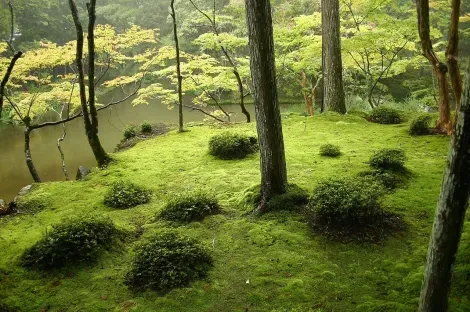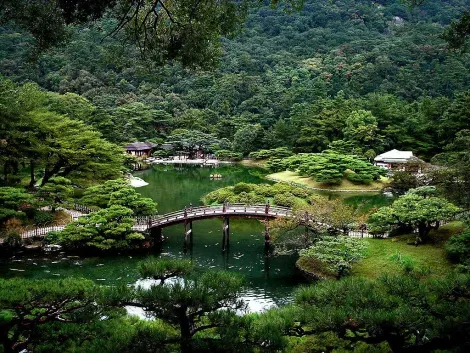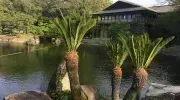Parks and Gardens 庭園
The most beautiful traditional gardens and parks to visit in Japan
Japanese gardens are not confined to the art of bonsai. These extraordinary gardens extend from the unknown, creating shapes similar to a distant landscape, breaking the order of the tiny and the infinite. The plant, mineral and water elements reproduce the beauty of nature. A rock is respected for its very existence ...
Moss gardens, rock gardens, and landscaped gardens breathe with the music of the water and wind. Gardeners are maestros recreating nature, artificially sublime, holding forces of the invisible.
The garden, a sacred space
For the geographer Augustin Berque: "The origins of the Japanese garden seem well-rooted in the sacredness of the wilderness." Many authors see them in the heaps of sacred stones that tie the human world to nature and the gods.
Designed for philosophical enlightenment, gardens have zen aesthetics and raise awareness of emptiness. Clean lines, fine gravel, formal abstraction in the dry landscape (kare sansui), a zen style garden where visitors can only sit and look, invites contemplation and forgetting of the self. This is ever apparent at the the unparalleled Ryoanji in Kyoto.
In parks and gardens around the country, the spring bloom of cherry blossoms announces that long-awaited symbol of the transience of life. The autumn maple draws in walkers, lovers, friends, and colleagues always on the lookout for joyful revelry, honoring the pleasure of being here and now.
- Read more: the most beautiful Zen gardens
The composition of Japanese gardens
The symbolism in Japanese gardens comes from their primary origin: religion. Their composition follows three main principles: miniature reproduction, symbolism, and the capture of landscapes. The miniaturization illustrates scenes in nature: stones, rivers, mountains, lakes, etc., in a reduced size. Finally, the landscape capture incorporates elements external to the garden, natural or not, in the composition and acts within limits imposed to insert the green space in a wider context.
The enclosures of Japanese gardens are always closed: giving the illusion of a large space. The boundaries are more natural: they take the form of hedges, palisades, bamboo or trees, for example.
Japanese gardeners, masters of illusion
The Japanese garden plays a lot on perspective, especially in the case of borrowed landscapes, shakkei. The shakkei gardens give the impression of infinite dimensions thanks to confused boundaries and games of dissimulation (miegakure, hide and reveal). Natural elements hide the real limits of the garden, while external and distant elements are incorporated into the composition (temples, pagodas, hills, mountains).
The three most famous gardens in Japan:
- Kenroku-en, in Kanazawa
- Koraku-en, in Okayama
- Kairaku-en, in Mito
DISCOVER THE BEST JAPANESE GARDENS ON OUR SELF-GUIDED TOUR
EXPLORE TOKYO'S TRADITIONAL GARDENS WITH OUR TRAVEL ANGEL
Parcs et Jardins japonais
Other themes :
- Train in Japan
- Attractions and Excursions
- Before you Travel
- Books on Japan
- Events and Festivals
- Family Travel
- Getting Around Kyoto
- Getting Around Tokyo
- Itineraries for Japan
- Japanese Food and Drink
- Japanese History
- Japanese Language
- Japanese Movies
- Japanese Pop Culture
- Japanese Stations
- Markets in Japan
- Museums and Galleries
- Nightlife in Japan: Going out, seeing and drinking
- Onsen, Hot Springs and Public Baths
- Outdoor Activities
- Restaurants and Cafes
- Shinkansen Travel Tips
- Shopping and souvenirs
- Temples and shrines in Japan
- Travelling in Japan: a comprehensive guide
- Understanding Japan
- Unique Trains in Japan











